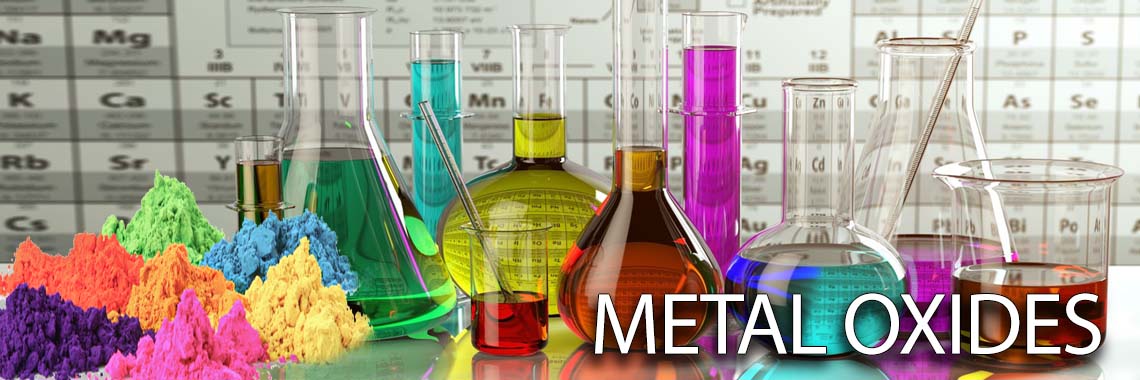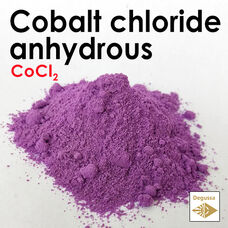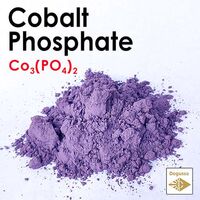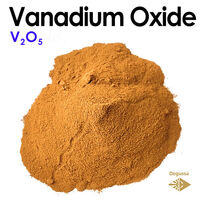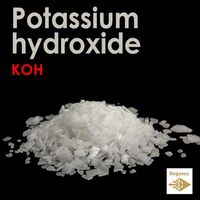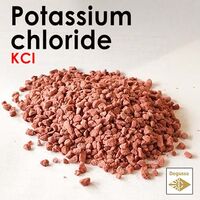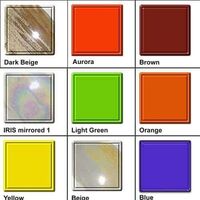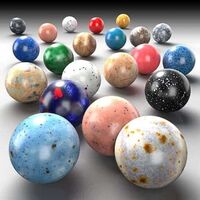What is cobalt chloride used for? What are the different colors of cobalt chloride? Where can I buy Cobalt chloride blue
CoCl2
Cobalt (II) chloride anhydrous, also known as Cobaltous Chloride, is a beautiful sky blue color. It is generally supplied in bead form and should be handled carefully as it is a suspected carcinogen. Arte Fo supplies cobalt (II) chloride anhydrous with 99,8% purity (metals basis) in several amounts.
Cobalt chloride is a common visual moisture indicator due to its distinct colour change when hydrated. The colour change is from a shade of blue when dry, to a pink when hydrated, although the shade of colour depends on the substrate and concentration. It is impregnated into a paper to make test strips for detecting moisture in solutions, or more slowly, in air/gas. Desiccants such as silica gel can incorporate cobalt chloride to indicate when it is "spent" (i.e. hydrated)
Applications
Cobalt(II) chloride is used in humidity indicator in weather instruments. In the anhydrous form, it finds use in electroplating of cobalt, in organic chemistry and is a precursor to cobaltocene, (bis(cyclopentadienyl)cobalt(II), which is a good reducing agent. It also serves as a Lewis acid. Cobalt chloride is an indicator for water in desiccants, owing to the reversible hydration/dehydration coupled with distinct color change. Cobalt chloride is useful for producing invisible ink as it turns blue when heated and becomes invisible once it gets cooled. Cobalt(II) chloride catalyzes cross-coupling of aryl halides or vinyl halides with aryl Grignard reagents in excellent yields.
Cobalt(II) chloride anhydrous refers to cobalt chloride without any water molecules incorporated into its crystalline structure. The chemical formula for anhydrous cobalt(II) chloride is CoCl2. This form of cobalt chloride is typically a bright purple to violet color.
Some common uses of cobalt(II) chloride anhydrous include:
Catalyst: Cobalt(II) chloride can act as a catalyst in various chemical reactions, particularly in organic synthesis. It is employed in reactions like the Beckmann rearrangement and in certain oxidation reactions.
Desiccant: Similar to the hydrated form (cobalt chloride hexahydrate), anhydrous cobalt(II) chloride can also serve as a humidity indicator or desiccant. It changes color reversibly from blue to pink as it absorbs and releases water vapor. This property makes it useful for indicating the moisture levels in sealed environments.
Chemical Research: Researchers and chemists may use cobalt(II) chloride anhydrous in laboratory settings for specific experiments or reactions where its catalytic or color-changing properties are beneficial.
It's important to handle cobalt compounds, including cobalt(II) chloride, with care, as they can be toxic. Appropriate safety precautions should be taken when working with these substances.
More about the Cobalt Chloride in Wikipedia.
Formula: CoCl2
Molecular Weight: 129.839 g/mol
Form: purple to violet crystalline solid
CAS Number: 7646-79-9
Density: 3.356 g/cm³
Synonyms: Cobalt muriate, Cobaltous dichloride, Cobaltous chloride anhydrous, cobalt(2+);dichloride, Kobaltdichlorid, Kobalt chlorid, Kobalt(II)-chlorid, Kobalt chlorid (German)
Cobalt Chloride: Catalysts, Desiccants, and Chemical Applications
- Brand: Degussa
- Product Code: Oxide - Cobalt chloride anhydrous - CoCl2
- SKU: CoCl2
- Availability: 300
- 3.99€
-
2.99€
Available Options
Related Products
Cobalt(II) phosphate - Cobalt Violet Cobalt Blue - Vivid and Saturated Colors
Co3(PO4)2 Cobalt phosphate is the inorganic compound with the formula Co3(PO4)2. It is a commercial inorganic..
2.99€
Vanadium Pentoxide - Vanadium(V) oxide Vanadia Divanadium pentaoxid in pottery
V2O5 Vanadium(V) oxide (vanadia) is the inorganic compound with the formula V2O5. Commonly known as vanadium pentox..
0.99€
Potassium hydroxide (KOH) - Kalii hydroxidum
KOH Potassium hydroxide (KOH) is a strong base, also known as caustic potash. It is an inorganic compound composed ..
0.59€ 0.99€
Potassium chloride - Red Potash
KCl Potassium chloride (KCl) is a chemical compound composed of potassium and chlorine. It is a metal halide salt t..
0.59€
Tags: oxide

